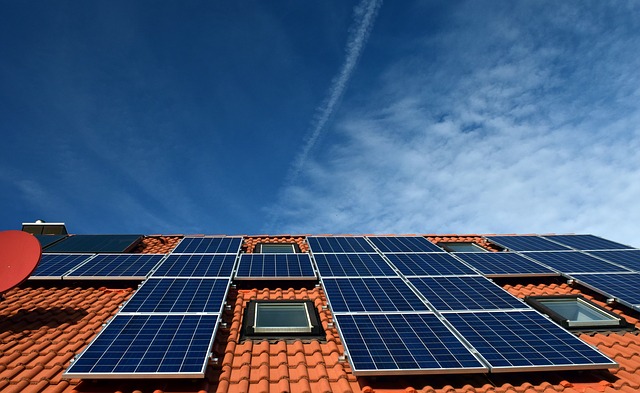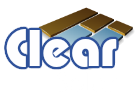Frequently Asked Questions
What’s in it for me?
Quite simply, a significant reduction in your energy costs. Federal and State Governments are keen for people to install solar power systems. Most State Governments have introduced feed-in tariffs. These pay you more for the electricity you generate and export to the electricity grid than you pay for electricity you draw from the grid. (See Tips to make the most of your Clear Solar system). Once you have installed your solar power system we will create Renewable Energy Certificates. Clear Solar will buy these certificates from you by reducing the final cost of your system. The amount you are paid for your renewable energy certificates is boosted under the Federal Government Solar Credits scheme.

What is the Solar Credits scheme?
You can learn all about the Solar Credits Scheme here.
What are Renewable Energy Certificates (RECs)?
In response to climate change, and to encourage the development of renewable energy, wholesale buyers of electricity such as retailers are required to source a portion of their power from renewable sources. This is demonstrated by the purchase of Renewable Energy Certificates (RECs) which must be surrendered to the Office of the Renewable Energy Regulator.
One REC represents the generation of 1 MWh (megawatt-hour) of electricity. As the total electricity produced by your Clear Solar power system depends on the amount of sun that falls on your roof, the number of RECs created by your system depends on its size and a factor linked to your postcode. The sunnier your postcode, the more RECs you can create. On installation, you can create RECs equivalent to the anticipated amount of power that your system will generate over the next 15 years.
RECs can be sold through companies that are authorised to deal in them. Clear Solar’s base prices assume that you assign the RECs created by your system to us. We then sell them, and this reduces the price of your system.
The Solar Credits scheme allowed owners of eligible solar power systems to create two times the normal number of RECs on the first 1.5 kW of their system until 31.12.2012. Find out more here
Why would I want to keep my RECs?
If you do not create RECs for your system then wholesale buyers of electricity will need to buy RECs from elsewhere, so by keeping your RECs you may be encouraging further investment in renewable energy.
What is a kW and kWh?
kW stands for kilowatt, or 1,000 watts. It is a measure of power. Your Clear Solar power system is rated according to the number of watts it can produce under standardised conditions.
kWh stands for kilowatt hour. It is a measure of energy. If you ran a 1 kW electric heater for one hour, it would use 1 kWh of energy. Electricity companies bill you a certain amount per kWh you use.
A typical Australian home will use about 14 kWh per day. A highly energy-efficient home will use about 4 kWh per day.
Will a 1 kW system produce 1 kW of power?
The short answer is “rarely”.
Manufacturers of solar panels rate their output under standardised conditions, often referred to as Standard Operating Conditions (SOC) or Standard Temperature and Conditions (STC). This test is designed to be a convenient method of comparing the performance of panels under laboratory conditions. In the real world, solar panels perform differently and some panel manufacturers also provide figures for panel performance under Normal Operating Temperature and Conditions, sometimes referred to as NOTC.
The main influence on the output of a solar cell is the amount of light that falls on it. However, performance is also closely related to the cell’s temperature. The standard test measures the output when the actual solar cell is at a temperature of 25oC and illuminated with 1,000 watts per square metre. The cells, being a dark colour, heat up in the sun. Typical operating temperatures are around 40oC, and at this temperature power output most cells produce around 5-7% less power than they generate at 25oC. On hot days cells may reach 70cC, leading to a 15- 25% drop in perfomance, depending on the cell. Also, atmospheric conditions mean that the amount of energy falling on the cells will rarely be 1,000 watts per square metre. However, for brief periods peak power may be achieved or even exceeded. On days with scattered cloud and cool breeze, for example, there will be times when bright sunshine falls upon cool cells, and power production will soar for a few minutes until the cell warms up.
Small losses of power also occur at the inverter (3-6%), and any dirt on the solar panels may also lead to a small additional loss. In the real world, a 1 kW system (as measured under Standard Temperature and Conditions) is likely to have a peak output of between 700 and 800 watts.
In line with world practice Clear Solar’s systems are rated according the panel specifications determined under standard conditions. However, the important figure is how much electricity your system actually produces. Our calculation of the daily output of each system is based on real performance under conditions experienced in south eastern Australia. Higher performance can be expected in sunnier parts of Australia.
What is the value of the electricity my system will produce over its lifetime?
There are many factors that will influence this calculation: the cost of electricity, the level of feed-in tariffs, the size of your system, how much sun it receives and how much electricity you use during the day.
A Micro Inverter 5.0 kW system installed in Melbourne can be expected to produce up to 6986 kWh (kilowatt-hours) per year. At current prices of around 33 cents per kWh peak and 20 cents per kWh off peak, that’s a saving of $2043 a year or more than $50000.00 over 25 years. Electricity prices are expected to rise steeply in coming years where the savings from your system will also increase. Feed-in tariffs for power returned to the grid will further improve the benefits of your solar power system.
I don’t have a north facing roof? Is this a problem?
Greatest efficiency is achieved when panels are mounted on a sloping roof facing north. However, panels can be mounted facing anywhere from east, through north to west, and still provide excellent performance. If you don’t have a suitable roof, panels can be mounted on frames in a sunnier part of the property. This is an additional cost, which needs to be quoted individually.
What about shading?
Electricity generation is directly proportional to the amount of sunlight falling on the panels. The longer the panels are in shade and the deeper that shade, the less electricity they will generate and the lower your savings. Around 5% of homes are unsuited to solar power installation due to shading. By using micro inverters the losses associated with shade are reduced by as much as 25% with each individual panel managed for maximum output.
Do I need a new electricity meter?
You will need a new bi-directional (import-export) meter if you wish to take advantage of the feed-in tariffs. (See Tips to make the most of your Clear Solar system).
With such a low price, do you compromise on quality?
Definitely not. All solar power systems must meet strict quality criteria to qualify for Government programs. Our panels come with a 25 year manufacturer’s performance guarantee, and have an expected life span of up to 40 years. We supply quality inverters, and all installers are accredited by the Clean Energy Council (formerly the Business Council for Sustainable Energy – BCSE). We comply with all state regulations for electrical safety and system inspection.
Are you systems resistant to storm damage?
Panels are designed to withstand exposure to the elements including rain, hail and wind. Your panels are more resistant to extreme weather than a standard tile roof.
Do I need to remain connected to the electricity grid?
It is possible to install an off-grid system, but this is usually only practical for remote areas. Off-grid systems require expensive batteries and different inverters, substantially increasing the cost.
Are there any ongoing costs?
The only costs are the annual maintenance inspections required to ensure the safe operation of your system and the replacement of any components that fail outside of the warranty period. Solar panels are guaranteed for 25 years. Inverters may have a shorter working life.
What happens if there is a power cut?
For safety reasons, grid-connected solar power systems must shut down within a fraction of a second of the grid losing power. This allows repairs to be made safely to the grid. Your system will automatically reconnect when power is restored to the grid.
Can I add further solar panels to my system in the future?
You can add further panels to most systems up to the capacity of your inverter however, the addition of more panels may require the system to be upgraded if the regulatory authorities change the installation requirements. We suggest that you install the largets system you can afford where the inverters capacity is efficiently used. Micro Inverters allow the flexibility of being able to increase the size of the system without the associated costs of upgrading your original installation.
Will my home and contents insurance cover my solar panels?
Yes, your system is normally covered under your Building policy, you should however notify your insurance company that you have added a solar power system to your property. Contact your insurance company to make sure your sum insured is sufficient to cover your assets, including your new solar power system.
Does my grid-connected solar power system require batteries?
No. Excess power you generate is sent to the power grid and used by other consumers. You will be credited for this power. When you are using more power than you generate, power is supplied by the grid. In effect, the electricity grid works a little bit like your battery.
